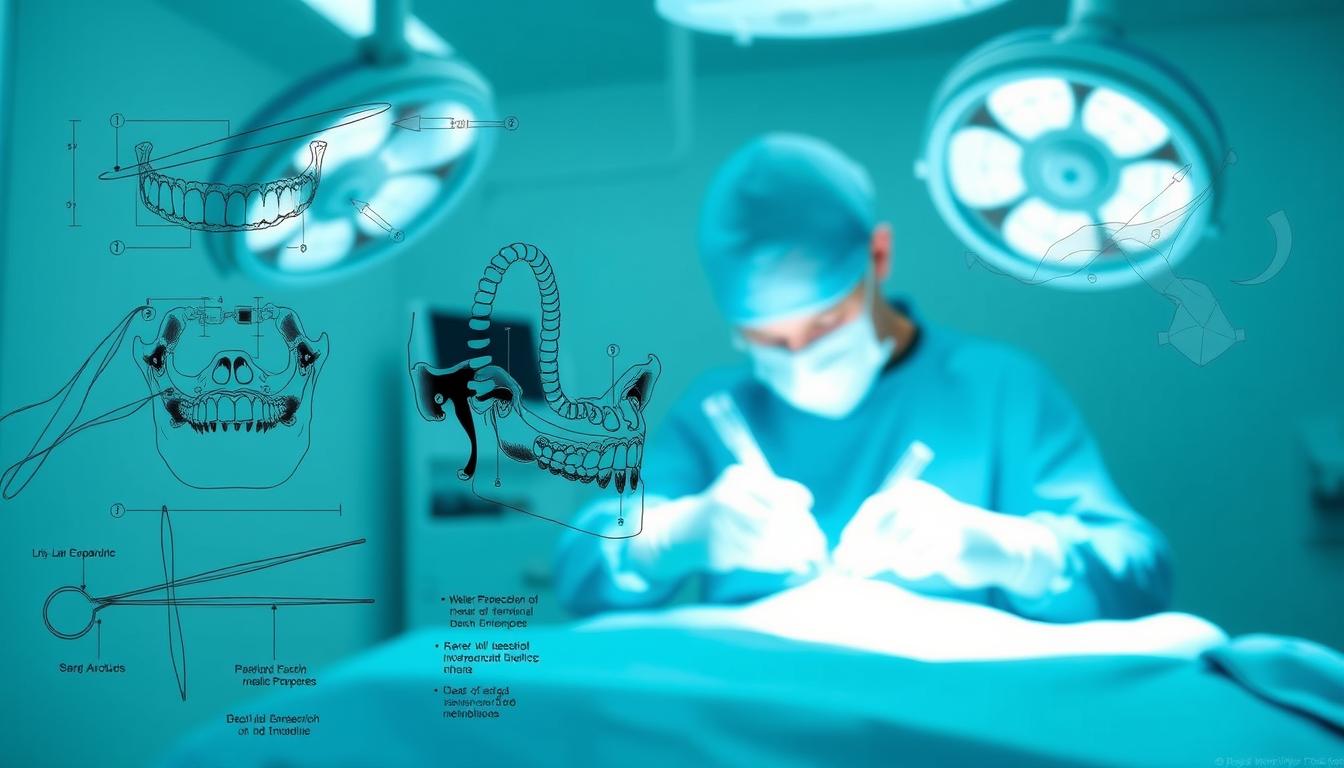Jaw surgery, also known as orthognathic surgery, is a corrective procedure that addresses jaw and teeth misalignments, tackling both functional and aesthetic concerns.
procedure is typically recommended when orthodontics alone cannot correct the issue, involving a collaborative approach between an orthodontist and a maxillofacial surgeon to achieve optimal results.
For patients considering this transformative surgery, understanding the recovery process and post-operative care is crucial for a smooth healing journey and successful outcomes.
Key Takeaways
- Understanding the role of orthognathic surgery in correcting jaw misalignments.
- The importance of a collaborative approach between orthodontists and maxillofacial surgeons.
- Overview of the surgical techniques used in jaw surgery.
- Insights into the recovery process and post-operative care.
- Factors to consider when deciding on jaw surgery.
Understanding Korean Jaw Surgery
Understanding the intricacies of Korean jaw surgery requires a look into its techniques, benefits, and what sets it apart. Korean jaw surgery, also known as orthognathic surgery, has become a sought-after procedure globally.
What Is Jaw Surgery?
Jaw surgery involves the surgical manipulation of the jawbone to correct functional issues and improve facial aesthetics. The procedure addresses various conditions, including underbites, overbites, crossbites, and facial asymmetry that cannot be corrected through orthodontics alone. By employing advanced surgical techniques, surgeons can achieve precise outcomes that enhance both the function and appearance of the jaw.
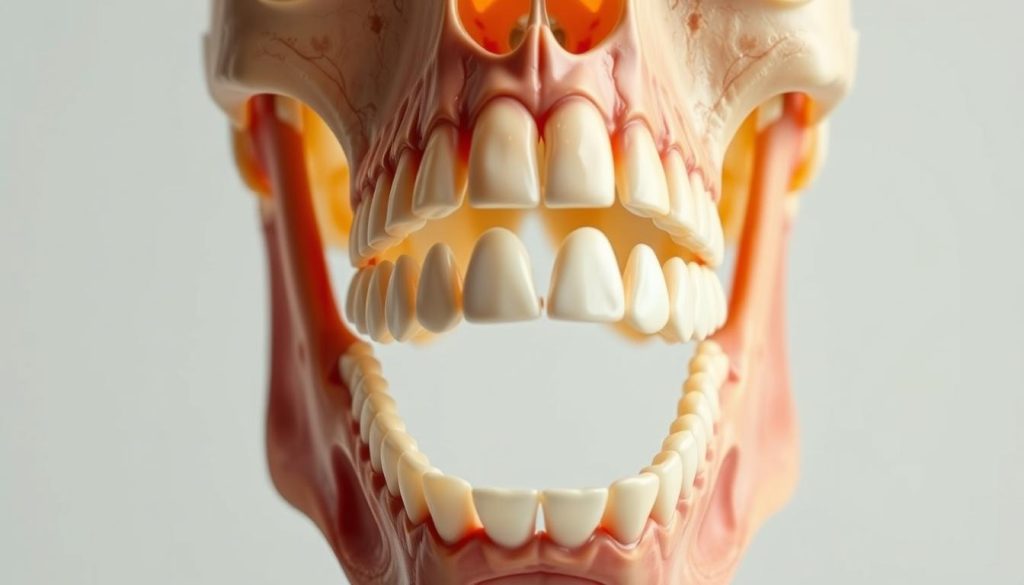
Why Korea Is Known for Jaw Surgery
Korea’s reputation as a premier destination for jaw surgery stems from its advanced medical technology and highly skilled surgeons. Korean clinics offer state-of-the-art facilities and employ innovative techniques like 3D imaging and Virtual Surgical Planning (VSP) for precise surgical outcomes. The benefits of undergoing jaw surgery in Korea include access to expert surgeons, cutting-edge technology, and comprehensive post-operative care. As a result, medical tourism for jaw surgery in Korea has grown significantly, with patients traveling from around the world to benefit from the country’s expertise and relatively competitive pricing.
- Korean jaw surgery combines functional correction with aesthetic enhancement, creating harmonious facial proportions.
- South Korea’s specialized surgeons undergo rigorous training and possess extensive experience in maxillofacial procedures.
- The country’s advanced medical infrastructure and innovative surgical techniques contribute to its reputation as a global leader in jaw surgery.
Types of Korean Jaw Surgery Procedures
Korean jaw surgery encompasses a range of procedures designed to correct jaw misalignments and enhance facial aesthetics. These surgical techniques are tailored to address various jaw abnormalities, ensuring both functional improvements and aesthetic appeal.
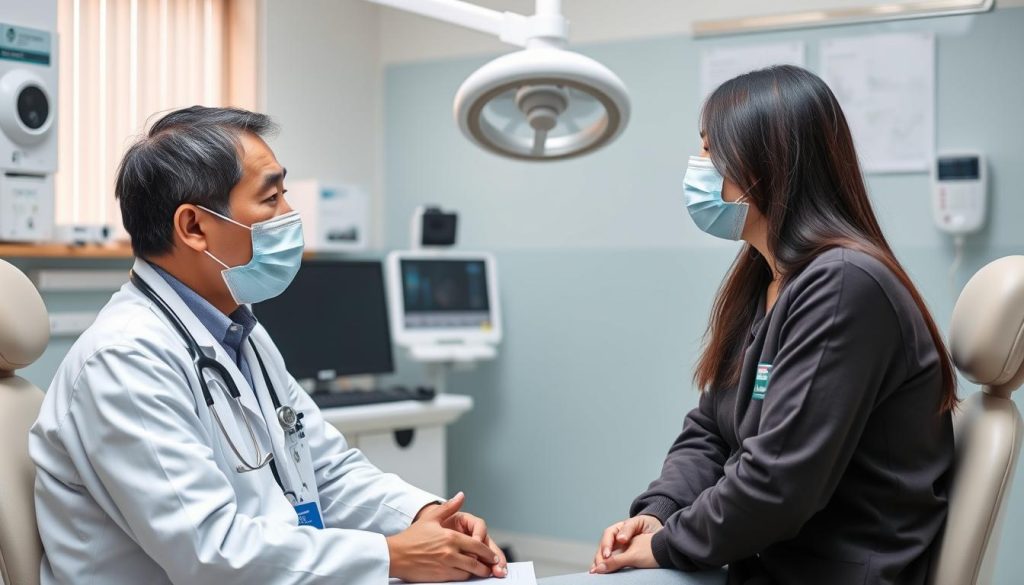
Upper Jaw Surgery (Maxillary Osteotomy)
Upper jaw surgery, or maxillary osteotomy, is performed to correct issues such as a significantly receded or protruding upper jaw, crossbite, disproportionate tooth visibility, open bite, and midfacial hypoplasia. During the surgery, cuts are made in the bone above the teeth, allowing the top jaw, including the roof of the mouth and upper teeth, to move as one unit. This procedure enables surgeons to reposition the entire upper jaw to achieve optimal alignment and facial balance.
Lower Jaw Surgery (Mandibular Osteotomy)
Lower jaw surgery involves modifying the lower jaw to address a receding or protruding lower jaw. The procedure includes cuts behind the molars and lengthwise down the bone, enabling the front section of the jaw to move forward or backward as needed. A popular variation of this surgery in Korea is square jaw reduction, where the wide angles of the mandible are reshaped to create a more V-shaped, feminine facial contour.
Double Jaw Surgery (Bimaxillary Osteotomy)
Double jaw surgery, also known as bimaxillary osteotomy, is a complex surgical procedure performed to correct imbalances in both the upper and lower jaws. This comprehensive approach addresses complex misalignments, achieving comprehensive facial harmony. All jaw surgeries in Korea are typically performed under general anesthesia with incisions made inside the mouth to avoid visible scarring. Korean surgeons often employ 3D imaging and computer-assisted planning to ensure precise bone modifications and optimal aesthetic outcomes.
The repositioned jaw segments are secured with titanium plates and screws that may remain permanently or be removed later depending on the patient’s needs. This advanced technique allows for significant improvements in both the function and appearance of the jaw, enhancing overall facial aesthetics.
Benefits and Considerations of Jaw Surgery
Korean jaw surgery offers numerous benefits, ranging from functional improvements to aesthetic enhancements. Patients considering jaw surgery must weigh these advantages against potential risks and complications.
Functional Improvements
Jaw surgery can significantly enhance a patient’s ability to chew, speak, and breathe properly. For instance, patients with sleep apnea often experience significant relief as jaw realignment can open restricted airways and improve breathing during sleep. According to experts, “Functional improvements from jaw surgery can address issues that may have caused discomfort or difficulty for years.”
Aesthetic Enhancements
Aesthetic enhancements are a major benefit of Korean jaw surgery, with procedures carefully designed to create balanced facial features and improved overall facial appearance. Korean surgeons excel at reduction procedures that create softer, more feminine jawlines for patients seeking a less angular facial contour.
Potential Risks and Complications
While jaw surgery is generally safe when performed by experienced surgeons, potential risks include temporary or permanent numbness, infection, bleeding, asymmetry, and unfavorable healing of the bone. Patients must carefully consider these risks and the recovery time required for jaw surgery. As one clinic notes, “Pain management is an important consideration, with most patients experiencing discomfort for several weeks following surgery.”
Ultimately, the decision to undergo jaw surgery should be made after comprehensive consultations with experienced surgeons to ensure realistic expectations about both the benefits and limitations of the procedures.
The Korean Jaw Surgery Procedure
Korean jaw surgery is a complex procedure that requires meticulous planning and precision. The process begins with comprehensive pre-surgical planning, which is crucial for achieving the desired outcome.
Pre-Surgical Planning and Preparation
Pre-surgical orthodontic treatment is a critical step, typically lasting 12-18 months, to align the teeth properly before bone repositioning. Advanced imaging techniques, including 3D CT scans and computer simulations, enable surgeons to plan the surgery precisely and visualize the expected results. Patients undergo thorough medical evaluations to ensure they are suitable candidates for the procedure and to minimize potential complications.
During Surgery: What to Expect
During the jaw surgery procedure, patients are under general anesthesia, ensuring comfort and minimizing pain. The surgeon makes incisions primarily inside the mouth to access the jawbone without visible scarring. Korean surgeons are skilled in precise bone contouring and reshaping techniques that create natural-looking jawlines while maintaining structural integrity.
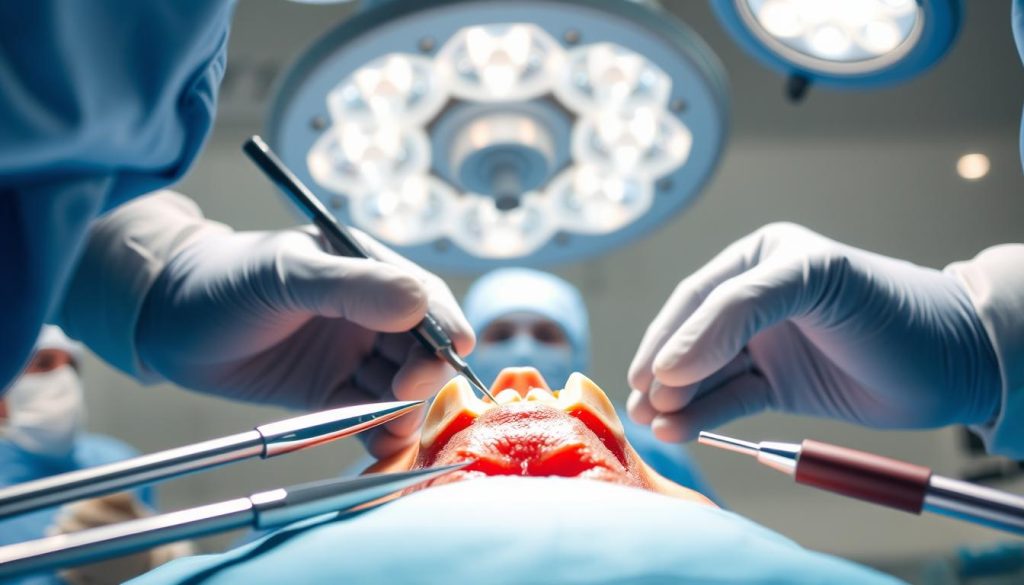
Advanced Techniques Used in Korea
Korean clinics employ advanced surgical techniques, including computer-guided surgery and 3D printing of surgical guides, to enhance the precision and outcome of the procedure. These techniques allow for minimally invasive approaches that reduce recovery time. The focus on patient comfort and safety is paramount, with continuous monitoring and pain management protocols in place.
The surgery typically takes between 2-5 hours, depending on the complexity, and patients are hospitalized for 1-4 days for initial recovery and monitoring. By combining advanced techniques with meticulous planning, Korean jaw surgery achieves remarkable results, making it a sought-after option for those seeking to refine their jawline.
Recovery Timeline After Korean Jaw Surgery

The journey to full recovery after Korean jaw surgery involves several stages that patients should understand. The process is complex and requires careful planning and adherence to post-surgical instructions.
Immediate Post-Surgery Period (1-2 Weeks)
During the immediate post-surgery period, patients typically experience significant facial swelling, bruising, and discomfort. This phase is critical, and patients are usually required to stay in the hospital for 1 to 3 nights.
The initial recovery phase involves a liquid diet, which helps in managing pain and reducing the risk of complications. Pain management is also crucial during this period, with prescribed medications helping to control discomfort and reduce inflammation.
Mid-Term Recovery (3-6 Weeks)
As patients progress to the mid-term recovery stage, they start to see a gradual reduction in swelling and an improvement in jaw mobility. Patients are advised to continue with a soft food diet and begin gentle jaw exercises as recommended by their surgeon.
Most patients can return to work or school after 2-3 weeks, although visible swelling may still be present for several weeks. It’s essential to avoid strenuous activities during this period to ensure proper healing.
Long-Term Healing (3-12 Months)
The long-term healing process involves continued bone consolidation and adaptation to the new jaw position. The final results of the surgery become fully apparent around the one-year mark.
Orthodontic treatment often continues during the recovery period to fine-tune the bite and ensure optimal functional results. Korean clinics typically provide comprehensive aftercare programs with regular follow-up appointments to monitor healing and address any concerns throughout the recovery process.
Top Korean Jaw Surgery Clinics
Korean jaw surgery clinics have gained international recognition for their expertise and state-of-the-art facilities. These clinics offer a range of procedures, from simple contouring to complex surgeries, ensuring that patients receive the best possible care.
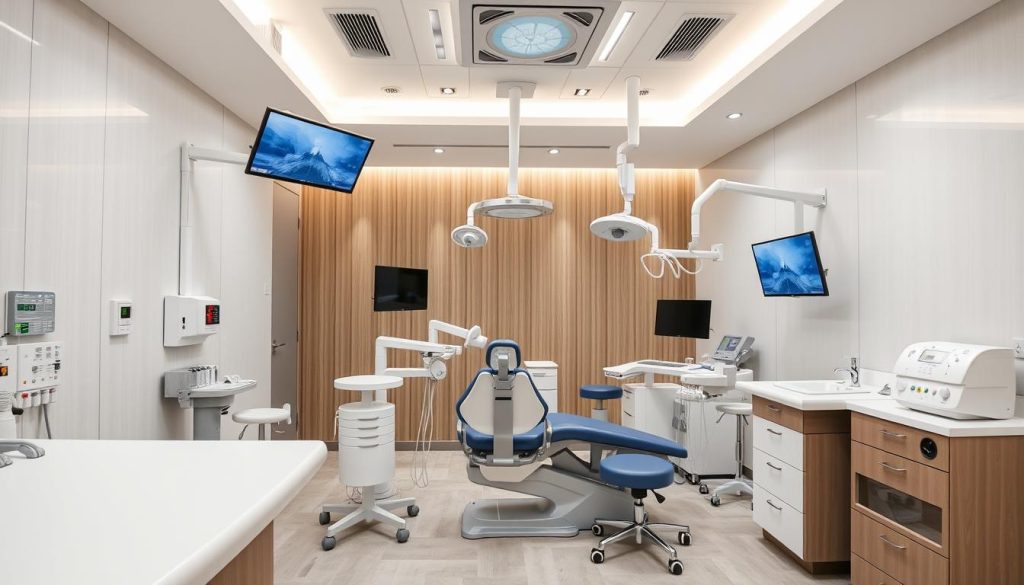
THEPLUS Plastic Surgery
THEPLUS Plastic Surgery, located in Gangnam’s Garosu-gil area, is a premier destination for those seeking world-class plastic surgery. Led by renowned surgeons Dr. Kim Taek Kyun and Dr. Jeong Jae Yong, the clinic specializes in facial contouring and jaw procedures.
The clinic offers a comprehensive approach to jaw surgery, providing everything from initial consultations to post-operative care within their state-of-the-art four-story facility. THEPLUS is particularly known for creating natural-looking results that enhance facial harmony while maintaining each patient’s unique characteristics.
Banobagi Plastic Surgery
Banobagi Plastic Surgery, established in 2000 by specialists from Seoul National University Hospital, has become a leading name in the field of plastic surgery in Korea. The clinic is known for its artisan spirit and commitment to beauty, with a reputation for exceptional surgical skills and a warm medical philosophy.
Banobagi excels in square jaw reduction procedures and double jaw surgery, with surgeons who avoid unnecessary or excessive interventions. The clinic’s comprehensive range of services includes specialized centers for facial contouring and jaw-related procedures, ensuring patients receive expert care.
View Plastic Surgery
View Plastic Surgery Clinic in Korea stands out as a premier destination for double jaw surgery, renowned for its commitment to the pursuit of beauty with a strong emphasis on safety. The clinic offers a comprehensive range of surgical and non-surgical procedures, ensuring personalized care and exceptional results for each patient.
View Plastic Surgery is particularly noted for its expertise in facial asymmetry correction and lantern jaw correction, creating more symmetrical and balanced facial profiles. The clinic emphasizes a safety-first approach with rigorous standards and protocols, providing peace of mind for patients undergoing complex jaw procedures.
All three clinics employ advanced technology and cutting-edge techniques that represent the gold standard in Korean jaw surgery and facial contouring. By choosing one of these top clinics, patients can ensure they receive the highest quality care for their jaw surgery needs.
Cost of Korean Jaw Surgery
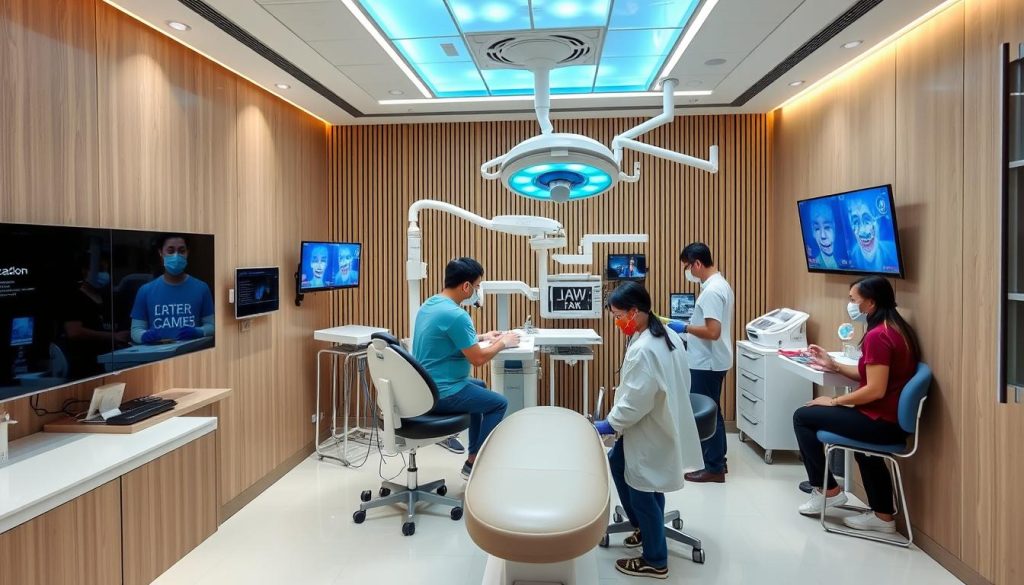
Jaw surgery in Korea is known for being cost-effective without compromising on the quality of care. The cost of Korean jaw surgery varies significantly based on the type and complexity of the procedures undertaken.
Price Breakdown and Factors
The cost of jaw surgery in Korea includes several components. For single jaw surgery, costs typically range from $7,000 to $15,000, while double jaw surgery can cost between $15,000 and $25,000. Square jaw reduction, a popular procedure in Korea, generally costs between $3,800 and $6,100.
Several factors influence the overall costs, including the surgeon’s expertise, the clinic’s reputation and facilities, and the complexity of the case. Most Korean clinics offer package pricing that includes pre-operative consultations, the surgery itself, hospitalization, and basic post-operative care.
Comparing Costs: Korea vs. United States
When comparing costs internationally, Korean jaw surgery is significantly more affordable than in the United States. While double jaw surgery costs between $15,000 and $25,000 in Korea, similar procedures in the U.S. can range from $40,000 to $50,000.
This significant difference makes Korea an attractive destination for medical tourism. Despite the lower price point, Korean clinics maintain high standards of care and surgical expertise, providing a compelling value proposition for patients.
Alternatives to Jaw Surgery
While jaw surgery is a popular choice for addressing jaw-related issues, several non-surgical alternatives can also provide effective solutions. These alternatives are often preferred due to their lower risks and less invasive nature compared to surgical procedures.
Exploring Non-Surgical Options
Non-surgical alternatives to jaw surgery include orthodontic treatments like braces and Invisalign, which can correct mild to moderate bite issues without modifying the bone structure. Facial fillers and Botox injections offer temporary jaw contouring effects, creating the illusion of a slimmer jawline. Dental restorations such as veneers, crowns, and bridges can address aesthetic concerns and minor functional issues.
- Orthodontic treatments for mild to moderate bite issues
- Facial fillers and Botox for temporary jaw contouring
- Dental restorations for aesthetic and minor functional concerns
When Surgery Becomes Necessary
Surgery becomes necessary when patients have severe functional impairments affecting eating, speaking, or breathing, which cannot be corrected through orthodontics alone. Significant facial asymmetry, extreme overbites or underbites, and sleep apnea caused by jaw position often require surgical intervention. Korean surgeons are skilled at determining when surgery is truly necessary versus when non-surgical alternatives might suffice.
| Treatment | Description | Suitable For |
|---|---|---|
| Orthodontic Treatments | Corrects bite issues without bone modification | Mild to moderate bite issues |
| Facial Fillers and Botox | Temporary jaw contouring | Aesthetic improvements |
| Dental Restorations | Addresses aesthetic and minor functional concerns | Minor issues, aesthetic improvements |
Making Your Decision: Is Korean Jaw Surgery Right for You?
Korean jaw surgery offers a unique blend of functional improvement and aesthetic enhancement. When considering this procedure, it’s essential to weigh the benefits against the risks and recovery time. Patients should be aware of the potential complications and the need for careful post-operative care.
Ideal candidates for jaw surgery typically have jaw misalignments that cause functional problems, such as difficulties with chewing, speaking, or breathing. These issues often result in facial asymmetry or disproportionate facial features. A consultation with a reputable clinic and experienced surgeon is crucial for determining the best course of treatment.
Patients should be prepared for a significant recovery period, including several weeks of swelling, a liquid diet, and restrictions on strenuous activities. The financial investment must also be considered, including travel costs, accommodation during recovery, and potential time away from work. By carefully evaluating these factors and selecting a skilled surgeon, individuals can achieve successful outcomes and improved facial aesthetics.
FAQ
What is the typical recovery time for cheekbone reduction surgery?
The recovery time for cheekbone reduction surgery can vary, but most patients can expect to return to their normal activities within several weeks. Swelling and bruising typically subside within a few weeks, but it may take a few months for the final results to be visible.
Is cheekbone reduction surgery performed under general anesthesia?
Yes, cheekbone reduction surgery is typically performed under general anesthesia to ensure the patient’s comfort and safety during the procedure.
What are the potential risks and complications associated with reduction surgery?
As with any surgical procedure, there are potential risks and complications associated with reduction surgery, including infection, bleeding, and adverse reactions to anesthesia. Patients should discuss these risks with their surgeon to understand the potential complications and how to minimize them.
Can I undergo reduction surgery if I have a square jawline?
Yes, reduction surgery can be an effective solution for individuals with a square jawline. The procedure involves reshaping the jawbone to create a more slender and feminine or masculine appearance, depending on the patient’s desired outcome.
What is the difference between cheekbone reduction and facial contouring?
Cheekbone reduction and facial contouring are related procedures, but they have distinct goals. Cheekbone reduction focuses on reducing the size and prominence of the cheekbones, while facial contouring involves a more comprehensive approach to reshaping the facial features, including the jawline, cheekbones, and chin.
Will I need to follow a special diet after reduction surgery?
Yes, patients are typically advised to follow a liquid diet or a soft-food diet for a few weeks after reduction surgery to minimize discomfort and promote healing.
Can I undergo strenuous activities after reduction surgery?
No, patients are usually advised to avoid strenuous activities for several weeks after reduction surgery to prevent complications and promote healing.
How long does it take to see the final results of reduction surgery?
The final results of reduction surgery can take several months to become visible, as swelling and bruising need to subside, and the facial tissues need to heal and settle.
